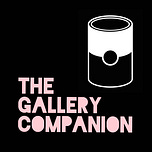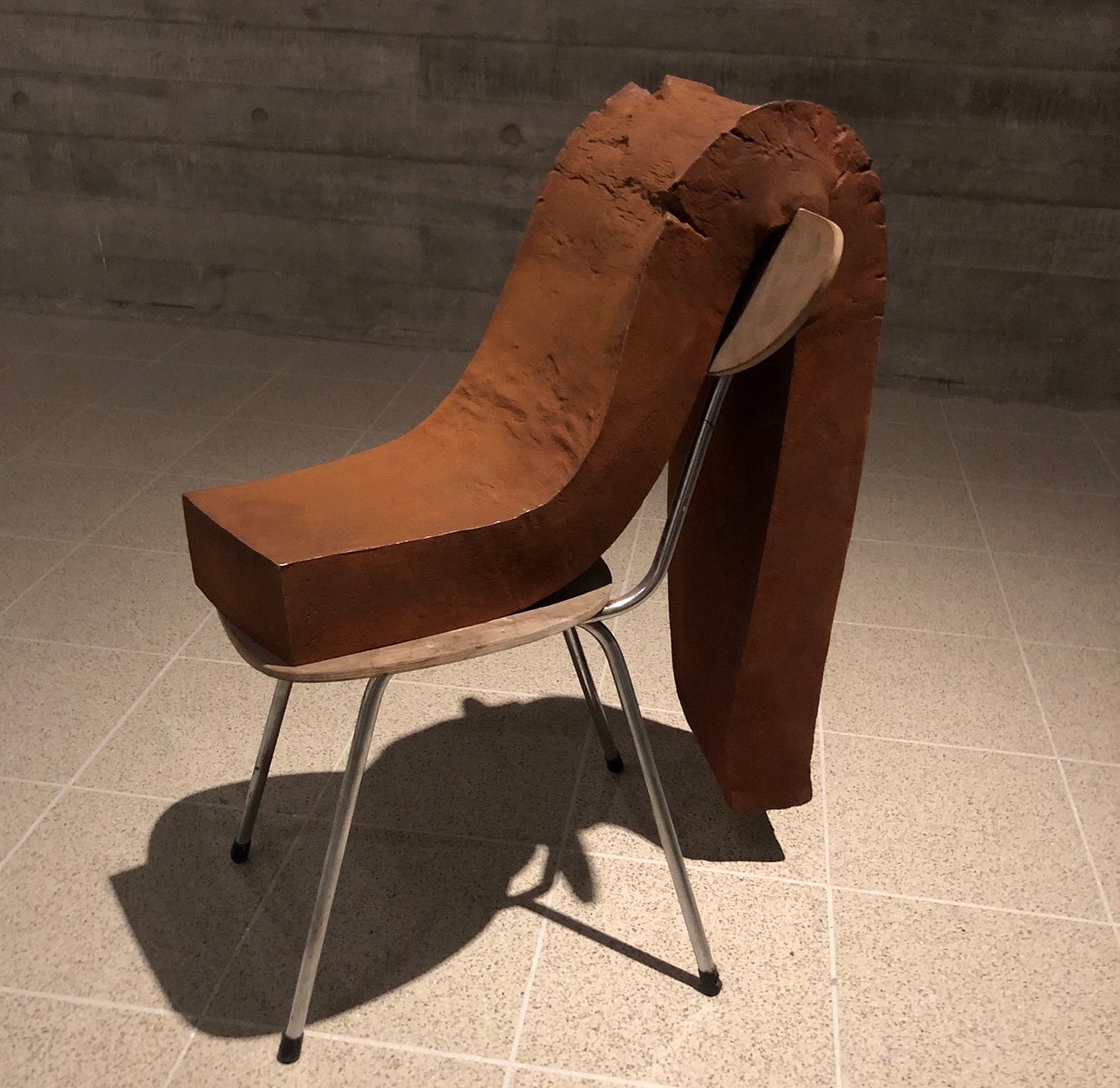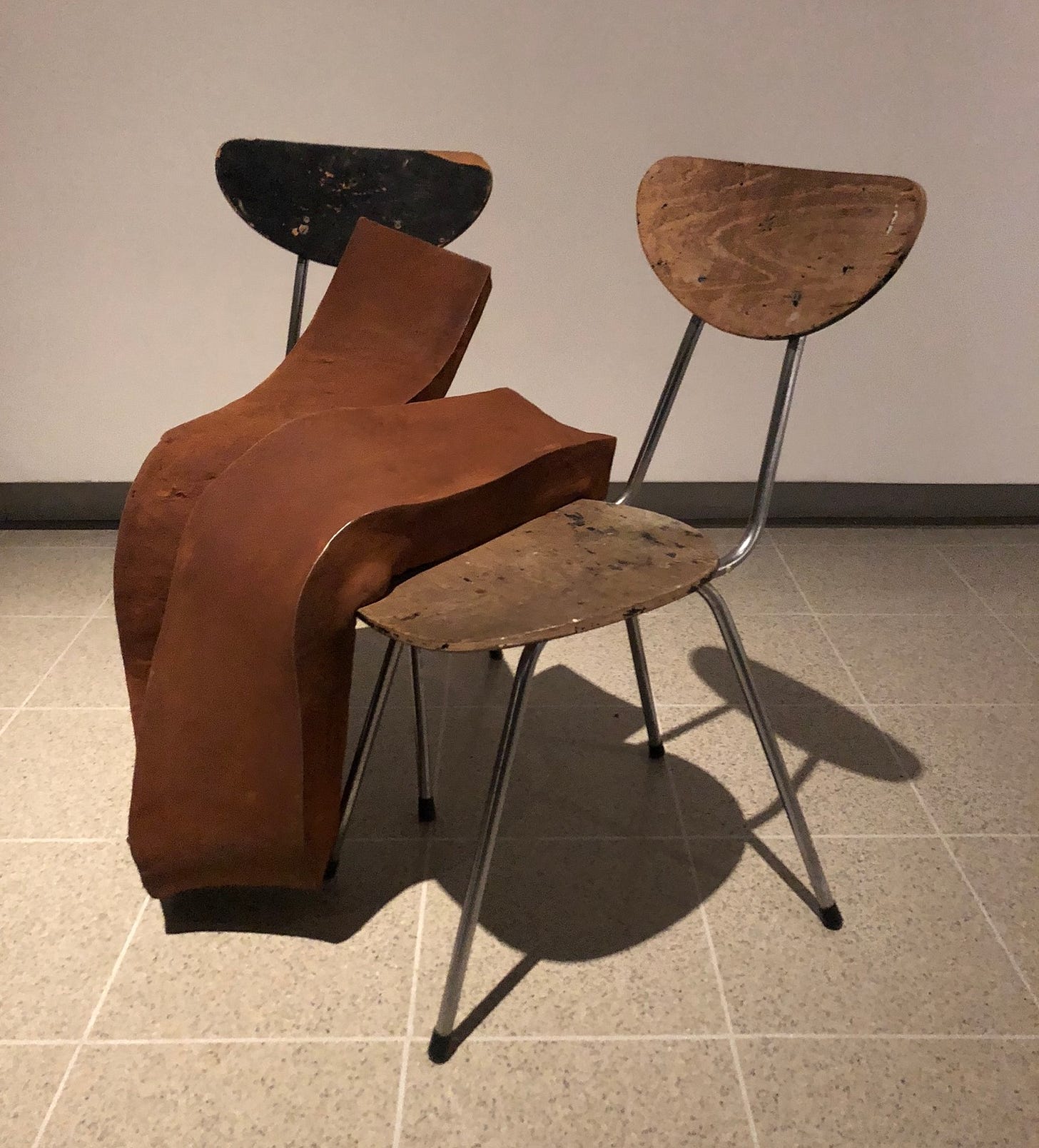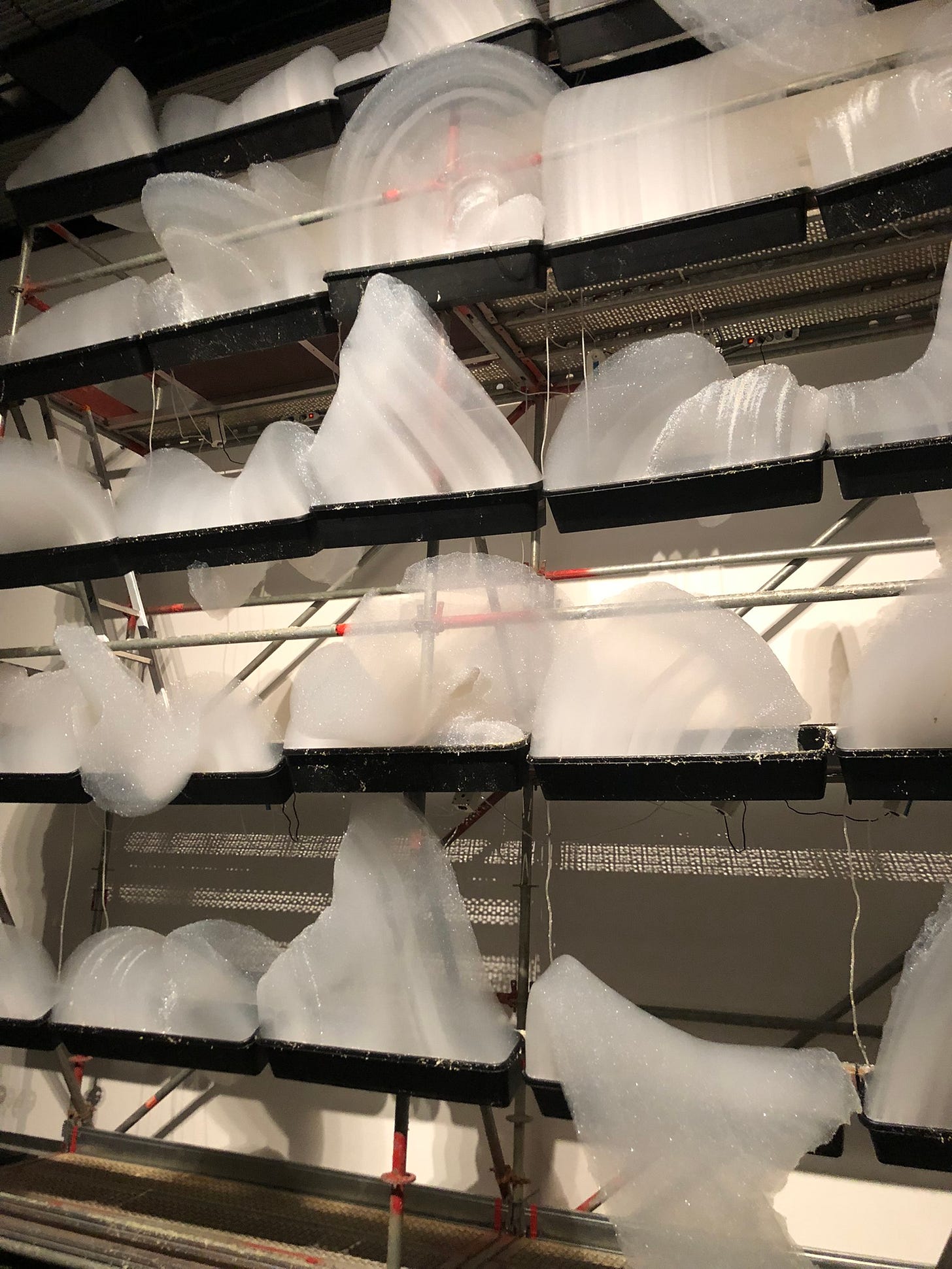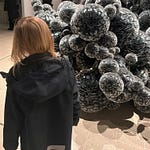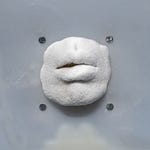You know when you’re looking at art and somehow it manages to convey feelings or sensations that are going on for you at that particular moment in time? I had that experience over and over again this week as I walked round the new exhibition at the Hayward Gallery in London called When Forms Come Alive: Sixty Years of Restless Sculpture.
I’m not sure what I was expecting from this show, although if I’m honest I was just ticking a ‘show them some sculpture’ box for my students before the end of the semester. I definitely wasn’t expecting to be moved by it like I was. Looking at some of these works was almost the equivalent of physically touching and feeling them with your eyes. In the words of the curator Ralph Rugoff, they invite us to look with a ‘tactile gaze’.
When Forms Come Alive is a show exploring the history of contemporary sculptural forms that are static and yet have some sort of dynamic tension in them. The different levels of energy emanating from the objects is palpable. The exhibition is constructed like a sort of theatrical set, with lighting and sound adding to the drama of it. These inanimate objects are the actors on the stage, communicating softly and then loudly, one taking over from the next, speeding up the pace and then slowing it down, as you move through the spaces of the gallery.
‘Restless’ is a great word to describe the sculptural forms in this show. There were works by several big-name artists including Ruth Asawa, Phyllida Barlow and Lynda Benglis, and others whose names were unfamiliar to me despite some having had decades-long careers. Almost everything was interesting. But there were three works in particular that I totally connected with because they perfectly conveyed in material form how I feel about my body, my energy levels and my state of mind at the moment. The concept that ‘form is feeling’ has never been more in evidence for me.
My first ‘ooh wow!’ moment came quite quickly, in response to the Polish artist Olaf Brzeski’s two untitled works from his Little Orphans series (2009). In these artworks he has twisted raw slabs of cast iron in such a way that they resemble thick spongy mattresses which are sort of draped, or rather slumped, over lightweight chairs. The heavy forms bend around the backs and seem to almost slide off the wooden seats, as though they don’t have enough energy to sit up properly. Gravity is pulling the objects down and it feels like only a matter of time before they slip off the seat completely, or collapse the chair under their weight.
There’s a sense of exhaustion conveyed in these forms, a tangible tiredness that pulls you in. It made me think about being stuck on the sofa half-asleep late at night, lounging uncomfortably and desperately wishing I was in bed but being unable to muster the energy to move.
Next to Brzeski’s sculptures was a huge wall of *something*, but it took ages for my brain to compute what my eyes were looking at. A scaffolding structure holds up large black plastic troughs overflowing with what looks like bubble bath foam. The white foamy shapes cascade down the sides, as if suspended in motion. From a distance they look more substantial than just soap suds. Are they made of solid foam? Whatever they are, they are so lightweight that they sway and twinkle almost imperceptibly in the half-lit atmosphere of the gallery space. I stood there for ages looking for movement and trying to understand it, and eventually gave up and read the blurb about it on the wall. I was right, it is bath foam.
In this artwork the French artist Michel Blazy has created form that slowly grows, mutates and eventually disintegrates. In a week the foam shapes will look very different, but the changes are taking place so slowly that you barely notice the movement. It’s a slow performance with an unpredictable material that the artist can’t control or contain. My takeaway in the current fog of my brain was that things may not be clear, who knows what the future looks like, but one thing’s for sure: nothing stays the same.
And my final shoutout amongst this treasure trove of an exhibition goes to Senga Nengudi’s Reverie ‘D’ (2014), an artwork from her ongoing RSVP series, which she began in 1976. In this sculpture, two pairs of nylon stockings are nailed into the wall and stretched taut horizontally, whilst a third pair is pulled down in a diagonal direction to the ground by the weight of what appears to be a sack of sand. The whole thing looks like it might ping or rip at any moment.
Nengudi has compared these stockings, stretched to their limits, to the elasticity of skin, which adapts to the way in which the female body transforms over the course of a lifetime: it can stand so much push and pull but eventually gives way, never to return to its original shape. There’s a latent energy in the tension of the stockings and the pendulous sack of sand, and it all made me think about ageing bodies, stretch marks and breasts losing their pertness. None of these thoughts made me jump for joy as a woman in my mid-40s, but even though it was a bit anxiety-inducing there was also something universally truthful in it that was comforting in a way. Nengudi has talked about how the strain on our bodies has a symbiotic relationship to the strain on our psyches. She says:
As human beings, we’re fragile, yet we’re so sturdy…there’s a lot of tension simply existing as a human being and so I like to incorporate that energy of what it means to exist.
Nengudi is an American artist who has been creating art since the 1960s, although I’ve never seen any of her work before. I really like it, and I love the ideas about the female body that inform her work. Here’s a short video of Nengudi talking about her career:
I also love how lightweight, ephemeral and easy-to-pack-away her work is in contrast to the traditions of heavy carved stone or cast metal sculpture. With a limited market for her work as a female artist Nengudi has always valued the portability of pantyhose. In an interview for the LA Times back in 2011 she said this:
There was always an issue about money, my concept was that I could take a whole show and put it in my purse. I could take it out of my purse and there would be no costs for installing or shipping. I liked this idea that a woman’s life is in her purse.
There’s so much more I could say about many of the other artworks in this brilliant exhibition, and I would encourage you to go and see it in London, if you can. As always I’d love to know what you think about the art and ideas I’ve talked about here — and if you’ve seen the show already, please tell me your thoughts on it.

